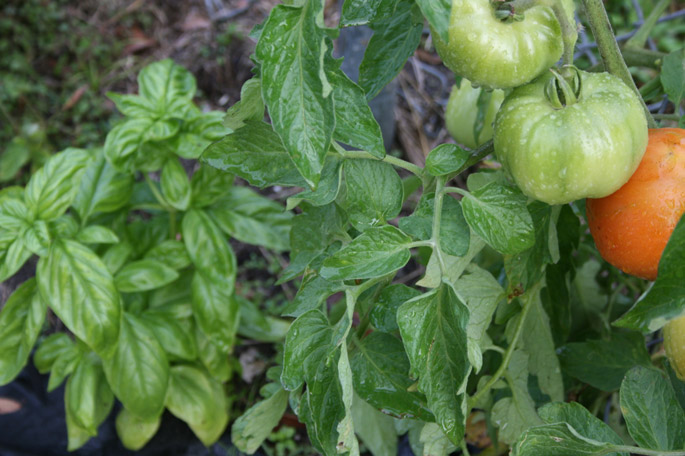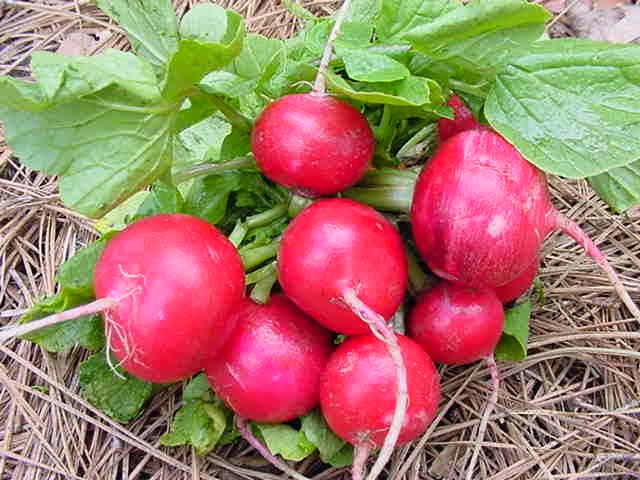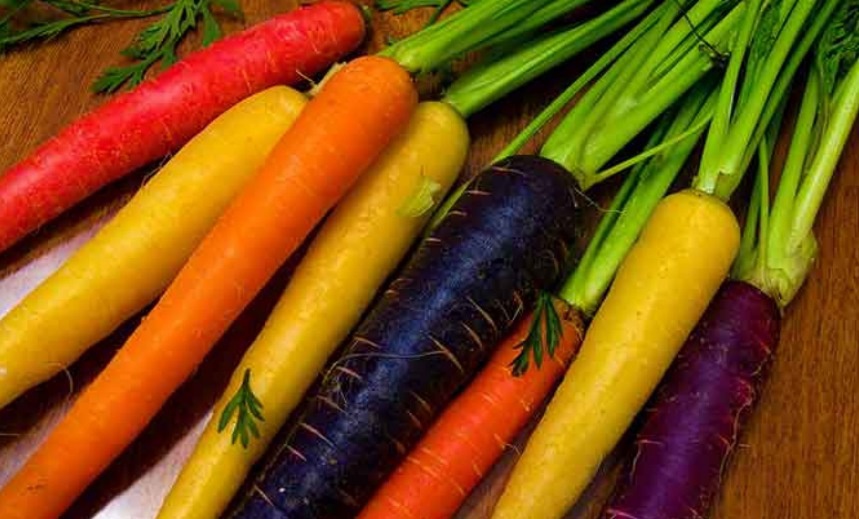Then it is correct to plant cabbage: the best neighbors in the garden
Content
Choosing a variety
Over so many centuries of cultivation, mankind has created many different varieties of cabbage, which differ in taste, texture of leaves and ripening times. In order to choose from this variety, we need to decide when we want to get the harvest, and what we will do with this harvest.
If we want to have a vitamin salad from tender cabbage in July, then we need to plant Gribovskaya, Polyarnaya, June. In August, "Golden Hectar", "Belorusskaya" and "Nadezhda" will ripen. For those who like to salt in September, "Gift", "Ladozhskaya" and "Tayninskaya" will ripen. "Amager" and "Moskovskaya" are also late varieties, but it is good not to salt them, but to keep them fresh. Perhaps best preserved in the Bevama cellar. But for pies it is good to grow "Savoy" with delicate wrinkled leaves.
If you really grow cabbage in your garden, then you do not need to be limited only to white cabbage. From July until late autumn, you can harvest broccoli, it, like kohlrabi, can be sown in May (preferably in a greenhouse), and after 20 days you can get strong seedlings.
Today, cauliflower is very popular. Its harvest can also be extended in time if you plant an early "Movir-1", an average "Guarantee" or "Otechestvennaya", and the largest will be the late "Solokrop". Brussels sprouts grow well on the site all summer, but the harvest can be harvested in the fall and frozen for winter soups.
Seed preparation
The best seeds are selected for sowing, to do this, they are calibrated in salt water. You need to prepare a three percent solution of table salt and soak the seeds in it for 5 minutes. Empty, unsuitable for germination seeds will float, and good ones will fall to the bottom. Those that surfaced are simply drained, and the rest are washed with clean water and dried. The smallest seeds are thrown away, and the rest are prepared for germination.
To test the seeds for germination, they are laid out on a wet cloth on a saucer and covered with the same damp cloth. At a temperature of 20-25 degrees in a damp tissue, the seeds will germinate. For those that sprouted after 3 days, check the germination of seedlings, and for those that germinated after 7 days - germination.
Before sowing, the seeds are treated to remove bacteria and fungi. To do this, you can hold the seeds in a strong solution of potassium permanganate, and then thoroughly wash them in clean water. Many people like to disinfect with garlic. Half a glass of water is mixed with 30 g of chopped garlic and the seeds are lowered there for 1 hour. After that, they are also thoroughly washed with clean water and dried.
The greatest effect is achieved with heat treatment. A gauze bag with seeds is immersed in hot water for 20 minutes. The whole difficulty lies in the accuracy of the temperature. It should be at least 48 and no more than 50 degrees. If the temperature is lower, the result may not be, and at a higher temperature, the seeds will lose their ability to germinate. In addition, it is difficult to maintain a constant temperature for so long, but this can be achieved with large volumes of water. After warming up, the seeds need to be held to cool in cold water.
In order for the seeds to germinate quickly, they are pre-soaked in room water for 12 hours. Moreover, the water is changed every 4 hours, and kept warm. The seeds should only swell, but not germinate. It is best to use melted snow water. If the seeds are ready and it is too early to plant, they can be kept sprinkled on ice or in the refrigerator, wrapped in a wet cloth.
You can soak the seeds in a wood ash solution. The solution is made as follows: 2 tablespoons of ash are stirred in 1 liter of warm water and filtered. The seeds must be left in the solution for 3 hours, then rinsed. The greatest effect is achieved if the seeds are soaked in a fertilizer solution, for example, nitrophoska. Dissolve 1 teaspoon of fertilizer in 1 liter of water and place seeds in it for 12 hours. Then the seeds are washed.
Before sowing, the seeds are hardened. For this, the soaked seeds are placed in a refrigerator and kept there at a temperature of 1-2 degrees for a whole day. Such seeds are easier to tolerate low temperatures and germinate better. All these activities are designed to make the seeds strong and persistent, to help them sprout and develop, despite diseases or possible cold snaps.
Cabbage Planting Video
Then plant
Usually gardeners do not plant the same crops in the same place for several years in a row. Roots deplete the soil at one level, pathogenic bacteria settle in the soil, pests get used to it, leave the larvae so that they can feed on the next plantings. Therefore, a culture in one place should grow no more than two years. And it is better to change the place every year, and not arbitrarily, but to plan which culture after which it is best to plant.
Cabbage grows well in fertile, structured soils, best of all on loam, with a high humus content. It will yield a good harvest if planted after legumes or grains. Can be planted after cucumbers and any root vegetables (potatoes, Jerusalem artichoke).If last year plants of the cruciferous family (radish, horseradish, mustard) grew on this site, then the cabbage can hurt after them, because they are close relatives. Will grow poorly after tomatoes. But after garlic or onions, pests cannot be lured to the site, you can safely plant cabbage.
Some gardeners prepare a plot for cabbage in the fall in this way: they specially sow it with legumes, and then simply dig it up, embedding them in the soil. While ensuring continuity, they also fertilize the soil at the same time.
Best neighbors
It is important to figure out after which crops the cabbage should be planted, but it is also important to know next to which crops it should be grown. Neighbors for plants, as for people, can make life easier or drink blood. The correct combination of plants in the garden can provide a good harvest, while the wrong combination of crops, on the contrary, can prevent the most promising varieties from growing. This is explained by the fact that plants drain the land in different ways, and some even influence neighbors with their smells, changing the metabolism.
Cabbage, cucumbers, tomatoes, onions, celery - these vegetables are very active in taking nutrients from the ground. So, next to them, you need to plant plants with roots located at a different depth in the soil, let everyone have enough food. You also need to remember that vegetables growing nearby need one watering regime. For example, spinach loves very frequent watering, which means that the cabbage next to it will not be comfortable, it is too humid. Beans are also not a desirable neighborhood.
Cabbage grows well next to beets or leafy greens. They say that cabbage will be tastier if you plant mint next to it. And dill and lettuce will drive away pests from it. In order not to get confused in the order of planting, experienced gardeners keep a special map, where they note that they also planted the code, since this is important for the future harvest, which means for the joy and pride of the owner.
Video "Siderata in the vegetable garden"
Siderata are natural fertilizers that will help you get a good harvest of any crop, including cabbage.





